This post may contain affiliate links. This just means I may receive a small commission at no extra cost to you for helping them promote their product or service. I don’t endorse any services I don’t personally use or recommend.
Let’s face it unless you’re well versed in your US National Parks geography or from the greater San Francisco area, most of us have no idea where Pinnacles National Park is, or what there is to see there.
Constantly overshadowed by the giants of Yosemite and Sequoia parks, it’s easy to see why it’s overlooked. I’m here to tell you why this park deserves your undivided attention and interest. So if avoiding crowds, breathtaking views, rock climbing, and unique wildlife pique your interest, grab your hiking boots and camera, and set your GPS for a full day in this underrated California park.
Your Guide to Pinnacles National Park
I had one main reason for visiting Pinnacles National Park. Condors. The California Condor. But we’ll get to that later. First, let’s take a look at what makes Pinnacles National Park special. Aside from nearly extinct massive birds.
History of Pinnacles National Park

Why is Pinnacles National Park worth the trip? Well, it’s sort of an enigma.
Lying near the San Andreas fault these limestone spires and vast crags seem to erupt out of nowhere. All the surrounding landscapes are grassy knolls and pasture land synonymous with central California. That’s because millions of years ago the Farallon plate subsisted under the North American plate. This area used to be volcanic and created the Coastal mountains. These volcanic ranges moved along with the North American plate leaving behind these weird formations that over time wore into, well pinnacles, and caves & gulches. A haven for endemic flora and fauna to flourish.
It’s also important to mention that Pinnacles has been home to a number of Native American tribes including but not limiting to Chalon and Mutsun tribes. In the 1700s they were decimated by the appearance of Spanish missionaries pushing religion in place of their culture and the diseases they brought with them.
Where is Pinnacles National Park?
Located only an hour and a half southeast of San Francisco, Monterey, and San Jose, it’s surprising how few visitors make it to Pinnacle’s dramatic and unique landscape. With only 168,000 visitors each year, it ranks 47th in popularity of National Parks. Towering limestone spires project like fingers shooting out from the desert floor, attracting climbers from all over the world. Meanwhile, bird and nature lovers look to the skies trying to catch a glimpse of the massive wingspan of the California Condor.
Pro tip: Condors, like most wildlife, tend to be most active in the early mornings or evenings, so plan your hikes accordingly. Remember to always look up. Evan spotted two just yards from us off the trail in a shaded tree.
When to Visit Pinnacles National Park
The best time to visit the park is spring. Temperatures are milder, wildflowers bloom, and the trails smell of desert sage. Keep in mind, for these very reasons, it also tends to be the busiest time of year, especially on weekends. For example, during our visit was in late April the campground wasn’t even half full and the parking lots had plenty of spaces.
Warning: Summers in Pinnacles is HOT. Since most trails are very exposed, I highly recommend visiting in spring or fall. If you plan your visit for the Spring or Fall months bring plenty of water and sunscreen. Dehydration is not to be truffled with.
Introducing the California Condor
Mac daddy of the bird world, this massive and highly endangered species resides in only a handful of places, and nowhere as prevalent as in Pinnacles.
Since being placed on the endangered species list in 1967, their numbers are just now starting to bounce back after being nearly decimated from lead poisoning. In 1980 there were believed to be only 10 condors in the wild. The main culprit? As the birds scavenged over carcasses of hunted animals, they would unknowingly ingest lead fragments from the ammunition and die. The California government has since banned the use of lead-based bullets and numbers are increasing. It’s a slow process, these birds breed and mature rather slowly adding to the pressures of extinction.
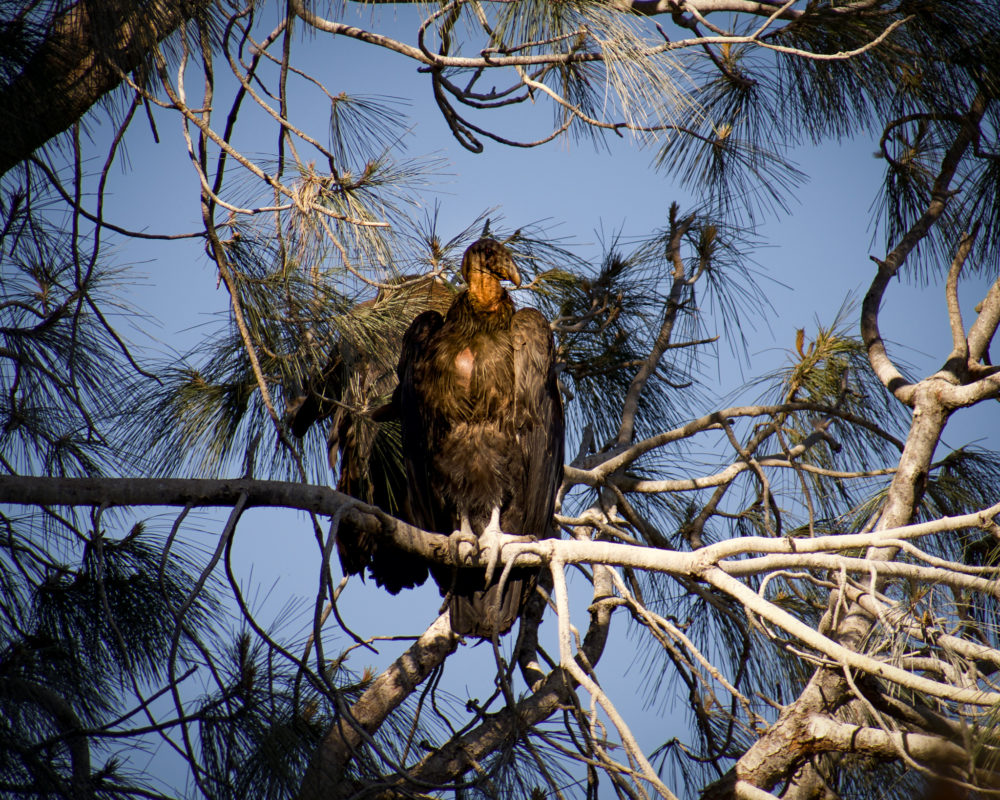
Fun Fact: Since condors only lay one single egg every 2 years, researchers stole the egg and hand raised the young, triggering the female to lay another egg that season. This doubled the output during the early years of recovery for the Condor.
First-Time Visitors to Pinnacles National Park
Here’s a few things you should know before you head to Pinnacles.
The layout of the park is divided into a west entrance and an east entrance. Inconveniently, there is no road that connects the two ends so you’re better off committing to one or the other. Each has its individual pros and cons.
If squeezing through dimly lit caverns among the company of Pinnacles 13 different species of bats sounds appealing, I recommend the west entrance. Due to the abundance of bat species, check to make sure you can access to these caves during your visit. Trails can be closed at different times of the year to protect the bats. If this is the opposite of your thing, I highly suggest the east entrance. Here is where the iconic and highly endangered California Condors can be spotted, while you snake your way through jagged spires via iron-railed ledges.
Being the wildlife lovers and adventurous hikers we are, we set south from San Francisco, heading for the east entrance taking Hwy 101 S to exit 353 for CA 25 S. The drive takes around 2 hours, while you meander your way through the agricultural heartland of central California. Rolling green hills, single-lane roads, and acres upon acres of crops make the time fly by.
Getting to the west entrance: To access the west entrance, take Hwy 146, off of Hwy 101 S from Soledad. From this park entrance, you can access the only visitor center, talus cave access, and Chaparral parking area and trailheads.
Where to Stay in Pinnacles National Park.
This depends on if you plan on camping, van-dwelling, or sleeping in a cozy hotel.
The only campground is on the east side of the park. I also found that this side of the park was easier to stealth-camp in with the van.
For tips on Stealth Camping be sure to read my post linked here.
But if an actual mattress is more your vibe, stick to the west entrance. The 11-mile drive to Soledad is the nearest town for lodging. There is also a winery in between the two, so that’s another plus.
Rent a Van for Pinnacles National Park
Don’t have your own campervan for epic road trips? You can always rent one. Traveller’s Autobarn rents vans from Los Angeles, San Francisco, and Las Vegas. All ideal starting points for visitors to Pinnacles National Park.
Their vans are huge & provide a luxurious vanlife experience that will convince you to build your own. Check out my vanlife page for more inspiration and van-dwelling tips.
Best Hikes in Pinnacles National Park
Okay, THE best hike in Pinnacles National Park. There are a few others that are scenic and beautiful in a deserty kind of way. But for those of us just planning on visiting for a single day, this is THE hike to do in the park.
High Peaks via Condor Gulch.
This is the best trail in the park. It’s also your best chance at seeing the massive prehistoric birds the trail is named for.
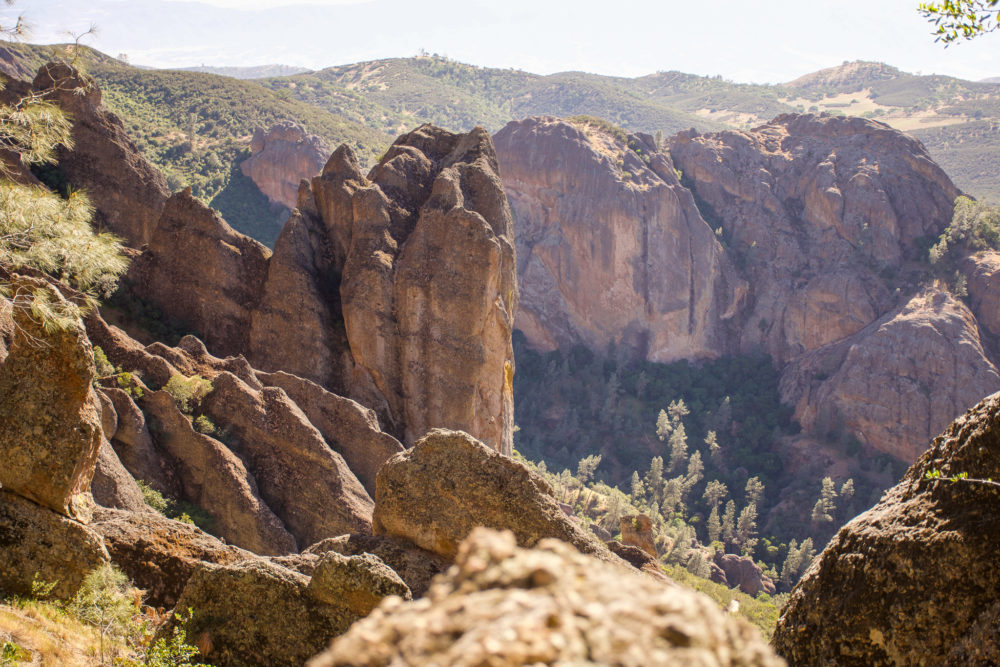
But it’s no easy feat clocking in at a 7.7-mile loop with a 1,942 ft of elevation gain.
I know we sound biased because this is the main hike we did while in Pinnacles. But hear me out. We did our research, we looked at alltrails.com, read reviews, and scoured the park map for the best route. And this just seemed like it had what we wanted. A mildly strenuous scenic hike, with a chance at spotting wildlife, and covering some serious ground. We wanted to be able to take our time and take it all in (hoping to spot condors). And that’s exactly what we got!
Tips for Hiking Condor Gulch
Here’s what you need to know before you hit the trails.
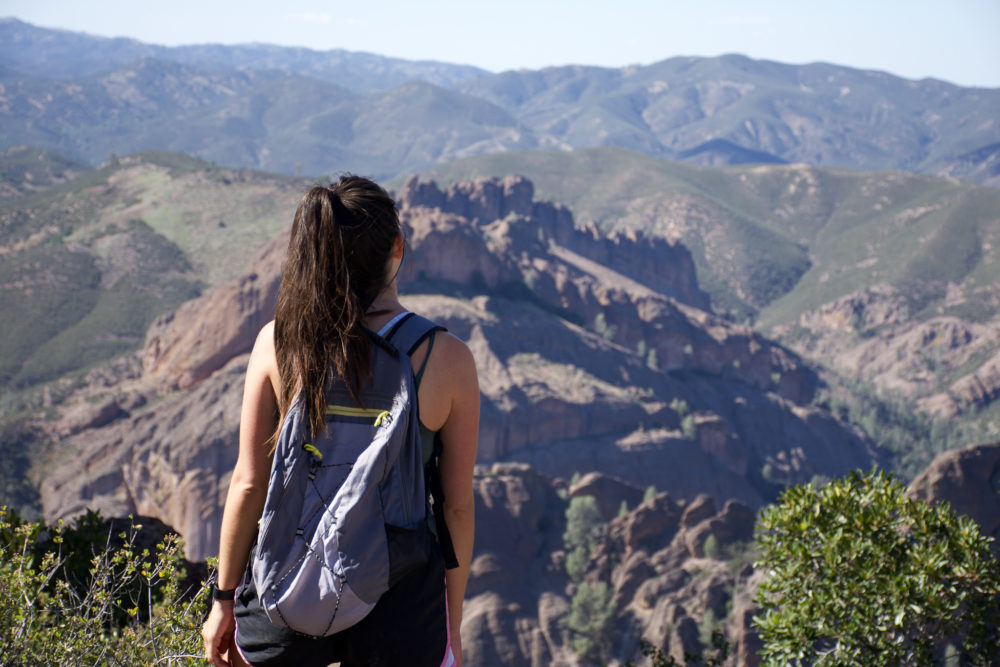
1. Park in the Bear Gulch Day Recreation area.
Also, it’s conveniently close to the only campsite in the park if you plan on spending the night.
2. Hike in the early morning or late afternoon.
We started later in the day to avoid the peak heat. Parts of this trail are exposed. But when the sun is lower it creates shade, not to mention you’re more likely to see the condors in those hours.
3. Don’t hike if you’re scared of heights.
It’s an iron rung trail and there are some spots along the summit where you have an exposed route and iron handrails are used for stabilization. It shouldn’t deter anyone who doesn’t have a severe fear of heights, just keep focused especially in these tricker parts.
How to Distinguish a Condor from a Common Turkey Vulture
Let’s get to the good stuff. Likely, the reason you’re intrigued with Pinnacles National Park in the first place. Here’s how to know if you’ve spotted the elusive California Condor.
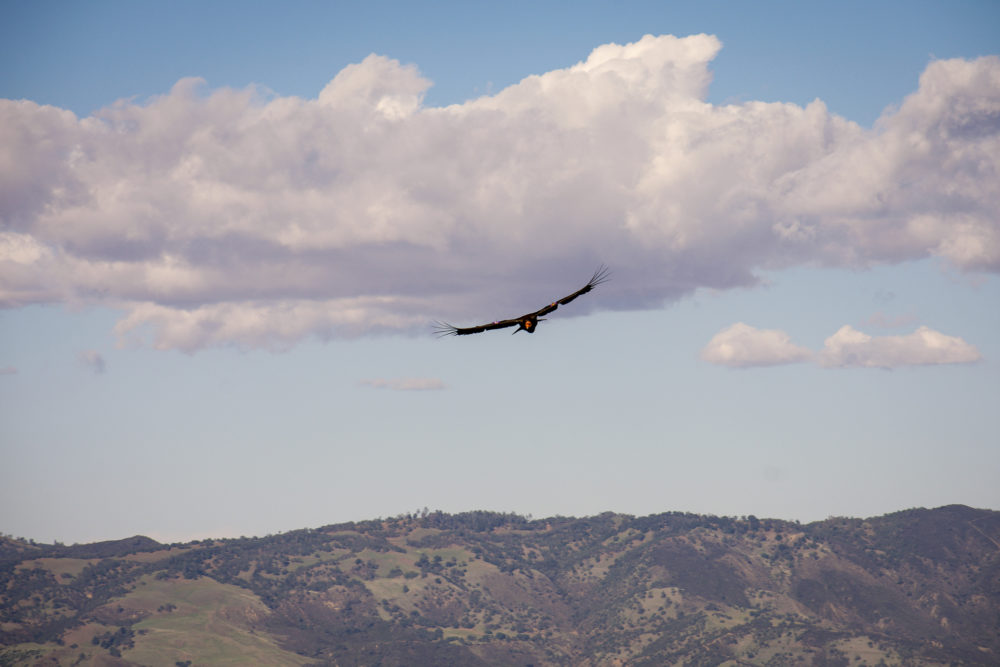
1. Condors are far larger than turkey vultures. Some reaching wingspans of 9 ft.
Even though condors have up to 9 ft wingspan, sometimes it’s hard to assess size against the lack of comparison in the vast blue sky.
2. Check the white spots.
The underbelly of a vulture is mostly white with a slighter black pattern along the feathered edge of its wings. Condors, on the other hand, are the complete opposite, showing a mostly black plumage with a smaller patch of white feathers along the wing’s edge near the front.
3. Condors are microchipped and numbered clearly.
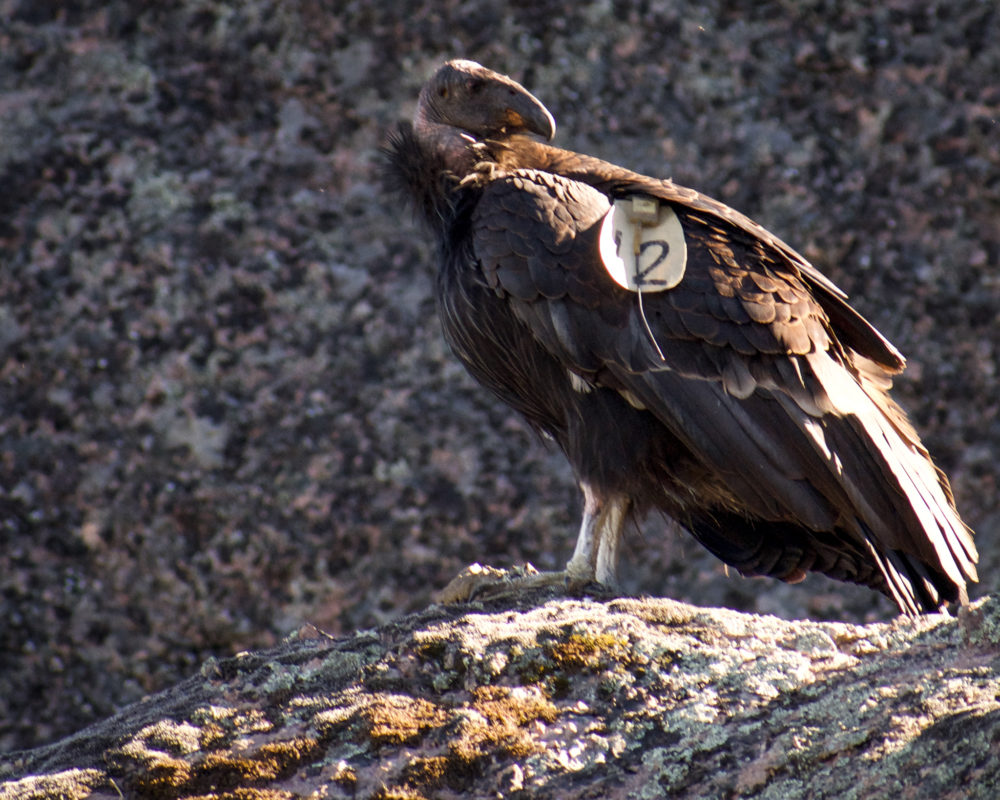
Also, look for the numbers on the inside of their wing. Since they are highly endangered most are chipped, or at the very least numbered to track them. This also helps you keep track of how many you see if luck is on your side!
Other Wildlife You Could Potentially Spot
Before we crane our necks looking for condors, let’s bring our gaze to ground level. As barren and dry as Pinnacles National Park may seem, it’s absolutely brimming with wildlife. Mule deer, coyote, lizards, and quail are abundant. Even more elusive ones you’re less likely to run into include mountain lions, bobcats, feral pigs, and badgers.
Another great example of the haven Pinnacles creates for highly endangered species across California is near Bear Gulch. Be sure to keep an eye out for the California red-legged frog. Thanks to conservation their numbers have increased and for the first time in over 20 years, hikers have opportunities to see them in that specific area.
Truthfully you don’t need long to see the entirety of Pinnacles National Park. It’s a relatively small area with a few noteworthy hikes and a smattering of desert wildlife. The landscape is very similar to what you might find in Utah’s Big 5 National Parks.
What truly sets Pinnacles apart are the California Condors. You really just need a single day to hit the trails, weave through the summit peaks, and marvel at the weird Mars-like scenery that seems so out of place in Southern California. So, there you have it. The “must do’s” in Pinnacles National Park.
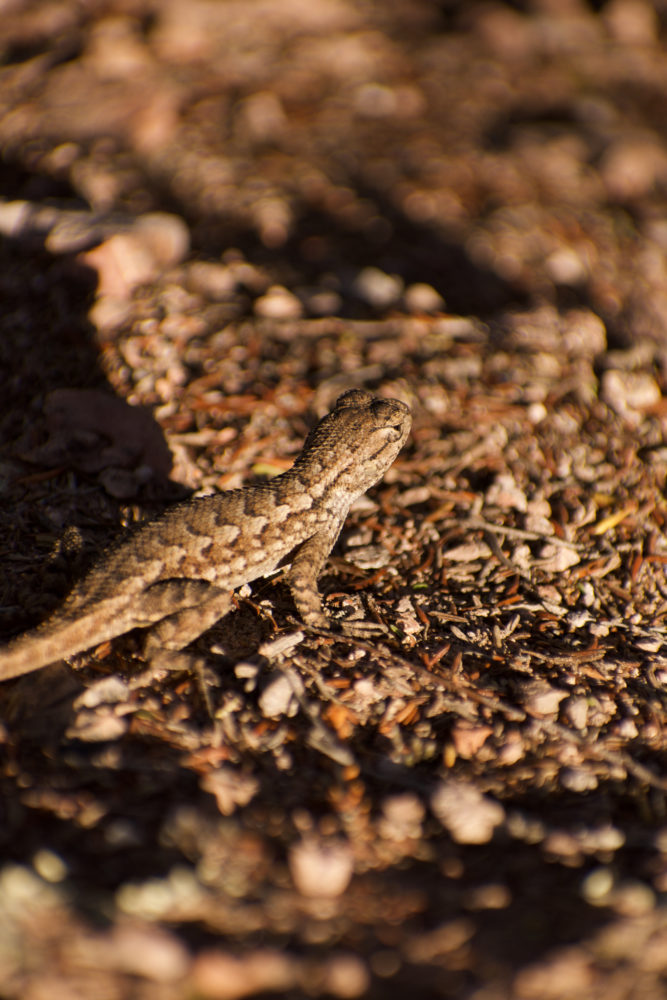
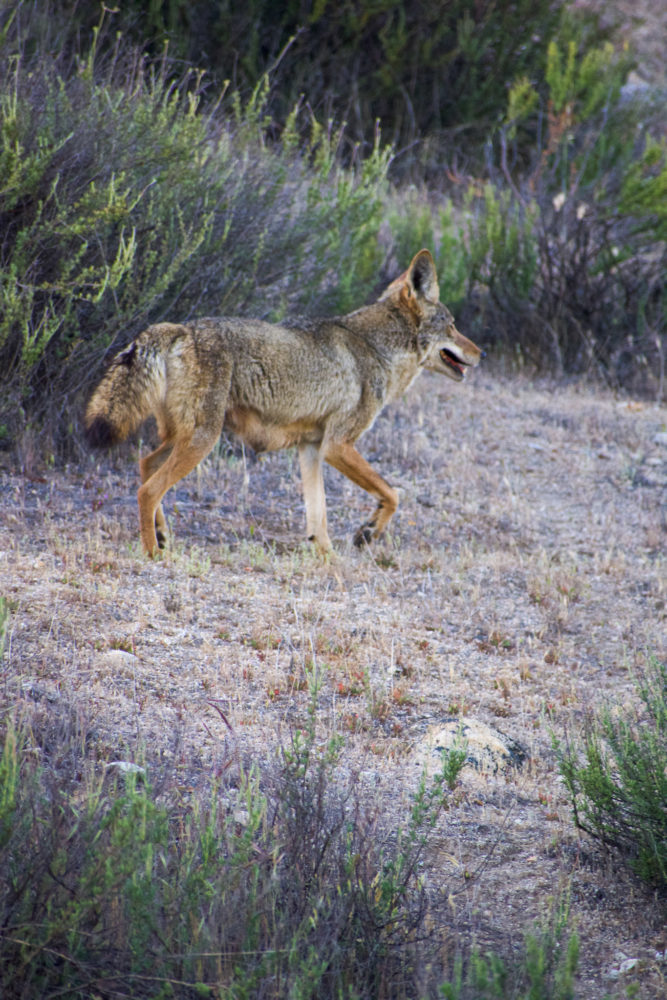
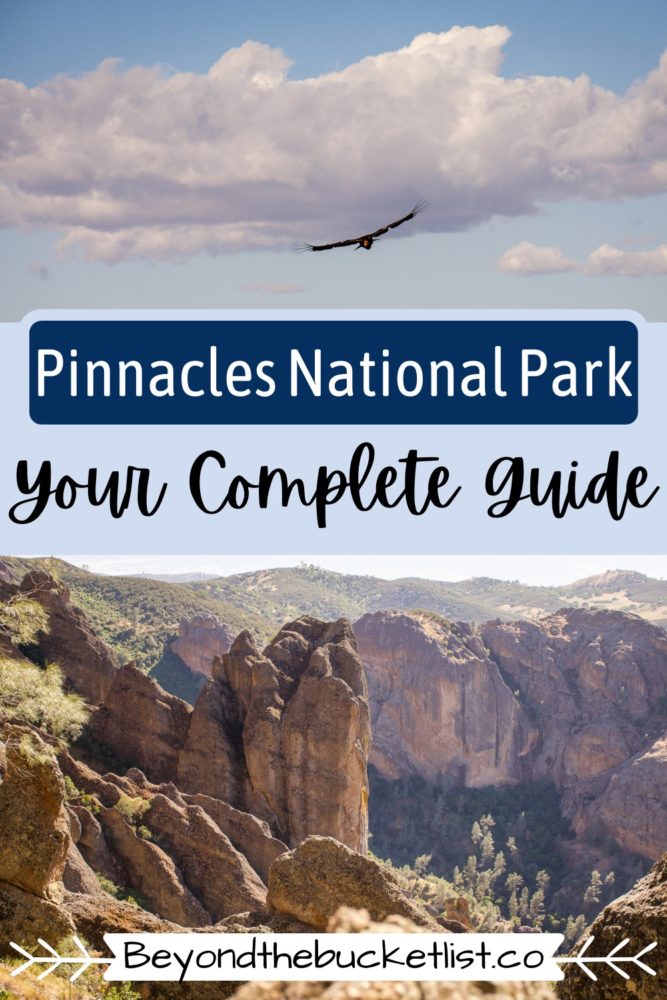
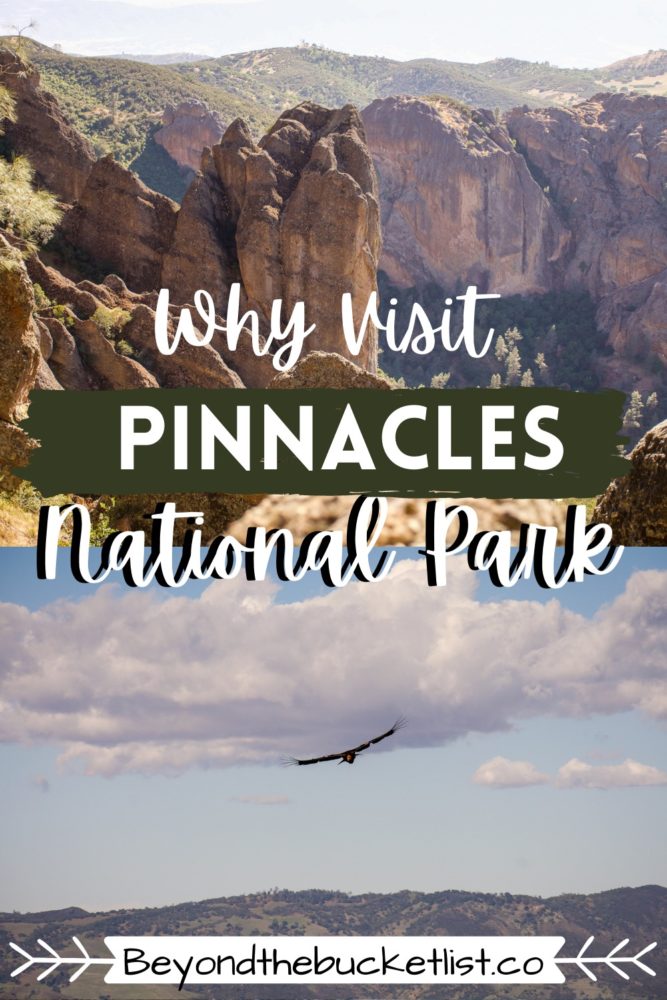
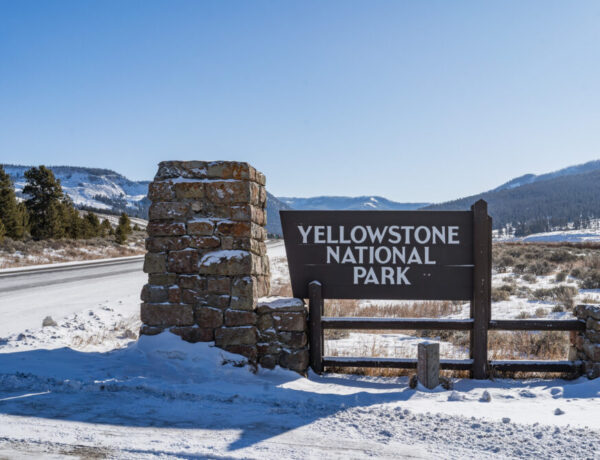

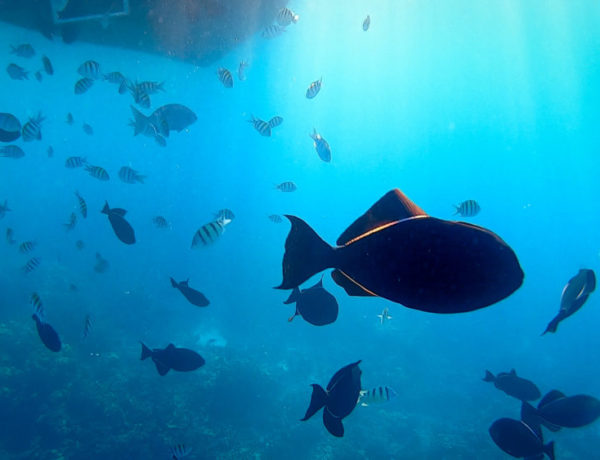


No Comments